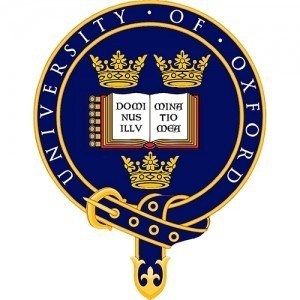Photos of university / #uniofyork
The Archaeology of Buildings program at the University of York offers a comprehensive investigation into the history, architecture, and cultural significance of historic structures around the world. This degree combines practical archaeological skills with the study of architectural features, construction techniques, and the social contexts that have shaped built environments across different periods. Students will gain a thorough understanding of how buildings have evolved over time, exploring their functions, symbolism, and the methods used to preserve and interpret them. Throughout the course, learners will engage in both theoretical study and practical fieldwork, including excavation, surveying, and recording of archaeological sites. The program emphasizes critical analysis, enabling students to assess architectural remains within their historical landscape and contributing to heritage conservation efforts. With access to state-of-the-art facilities and a vibrant academic community, students can participate in real-world projects, internships, and research initiatives that prepare them for careers in archaeology, cultural heritage management, conservation, and related fields. The curriculum is designed to foster analytical thinking, technical expertise, and an appreciation of the cultural diversity of building practices worldwide. Graduates from this program will be equipped with the knowledge and skills necessary to interpret historic buildings and contribute meaningfully to their preservation for future generations. The Archaeology of Buildings at York is ideal for students passionate about history, archaeology, architecture, and cultural heritage, providing a stimulating environment to develop specialized skills and a deep understanding of the built environment's role in human history.
The Archaeology of Buildings programme at the University of York offers students a comprehensive understanding of the historical and cultural significance of buildings and their architecture. This degree explores the ways in which archaeological, historical, and architectural methods can be combined to study the development of built environments throughout history. Students will investigate a wide range of structures, from ancient monuments and medieval churches to modern buildings, gaining insights into their construction, use, and preservation. The programme emphasizes interdisciplinary approaches, integrating archaeological excavation techniques, architectural analysis, and contextual historical research to provide a well-rounded perspective on the material and cultural significance of buildings.
Throughout the course, students will engage in practical fieldwork, including site surveys, excavations, and recording methods, to develop hands-on experience in documenting and analyzing architectural remains. The curriculum covers topics such as ancient construction techniques, conservation principles, digital recording technologies, and the socio-economic factors influencing architectural development. Students are encouraged to critically assess how buildings reflect societal values, technological advancements, and cultural identities over time. In addition, the programme offers opportunities for specialization, allowing students to focus on particular eras or types of structures, such as Roman villas, medieval castles, or modern urban environments.
The programme aims to prepare students for careers in archaeology, heritage management, conservation, and related fields. It combines theoretical knowledge with practical skills, including the use of Geographic Information Systems (GIS), photogrammetry, 3D modeling, and archival research. Students will also have access to cutting-edge laboratories and research facilities, supporting in-depth analysis of building materials and architectural features. The university’s strong links with heritage organizations and archaeological projects provide opportunities for placements, internships, and collaborative research.
Graduates from this programme will be equipped to critically interpret archaeological and architectural data, contribute to the preservation of historic sites, and support sustainable management of built heritage. The programme encourages a critical understanding of the ethical, social, and environmental issues involved in conservation and restoration efforts. Overall, the Archaeology of Buildings at the University of York offers an immersive educational experience that combines academic rigor with practical expertise, fostering the skills necessary to make meaningful contributions to the understanding and preservation of our built environment.
The Archaeology of Buildings program at the University of York requires students to demonstrate a strong foundation in archaeological theory and practice, with a particular focus on the study of historical and prehistoric structures. Prospective students are expected to hold relevant qualifications such as A-levels, Scottish Highers, or equivalent, typically including courses in history, archaeology, or related disciplines. Additionally, prior experience in archaeological fieldwork or critical analysis is advantageous. The program emphasizes a comprehensive understanding of architectural history, methods of archaeological excavation specific to building remains, and the interpretation of material evidence to reconstruct past human activities. Students will engage with teaching modules covering topics such as architectural analysis, conservation techniques, and the cultural significance of structures across different historical periods. Practical skills development is integral, often involving hands-on fieldwork, laboratory analysis, and the use of digital technologies for documentation and interpretation. Assessment methods include coursework, practical reports, presentations, and examinations, encouraging the development of both theoretical knowledge and applied skills. To successfully complete the degree, students must undertake a substantial independent research project, often in the form of a dissertation, contributing original insights into the archaeology of buildings. The program also promotes interdisciplinary approaches, integrating insights from architecture, history, and conservation studies. Strong analytical, communication, and team-working skills are essential to excel in this field. Entry into this program typically requires a UCAS application, with a personal statement demonstrating relevant interests and experience. The program prepares graduates for careers in archaeological consultancy, heritage management, conservation, museum curation, and further academic research. Overall, the Archaeology of Buildings at York combines rigorous academic study with practical training, fostering expertise in understanding the historical significance and preservation of built heritage.
The University of York offers a range of funding options for students enrolled in the Archaeology of Buildings program. These include government-backed student loans, scholarships, bursaries, and grants aimed at supporting both domestic and international students. For UK/EU students, tuition fees are subject to annual updates and may be covered partially or entirely by undergraduate funding schemes such as the Student Loan Company, which provides maintenance and tuition fee loans. International students are encouraged to seek scholarships specifically designated for entrants from outside the UK, including those offered directly by the university, which can provide partial fee waivers or research grants.
The university's financial support package also emphasizes the importance of external funding opportunities. These include research council grants, private foundations, and archaeological societies that provide funding for postgraduate research and fieldwork expenses. Funding applications are typically available through the university’s dedicated funding database and are subject to eligibility criteria outlined on the website. The university's Financial Support Office assists students in navigating the application process, ensuring they are aware of deadlines and required documentation.
students are also encouraged to explore external scholarship portals and national schemes such as the UK Government's postgraduate funding programs, which can provide additional financial assistance. For students pursuing specialized archaeological research, funding for conferences, international field trips, and laboratory analyses may be available through departmental bursaries or collaborative research projects. The university also offers hardship funds for students experiencing unexpected financial difficulties, which can be accessed through the student services department.
In summary, funding for the Archaeology of Buildings program is comprehensive, covering tuition fees, living costs, research expenses, and fieldwork opportunities. Prospective and current students are advised to consult the university’s official financial support webpage and contact the administration directly to receive tailored advice and support for their funding applications.
The Archaeology of Buildings program at the University of York offers a comprehensive exploration into the historical development, architectural features, and cultural significance of built structures across different periods and regions. This programme is designed for students interested in understanding how buildings reflect societal changes, technological advancements, and aesthetic values over time. Students will engage with a diverse range of topics, including architectural history, building conservation, archaeological methods related to architectural analysis, and the social context of construction practices. The curriculum emphasizes both theoretical understanding and practical skills, enabling students to analyze archaeological remains of buildings, interpret historical architectural styles, and develop conservation strategies.
Throughout the course, students will participate in lectures, seminars, and practical workshops that often include fieldwork components such as site surveys, excavation projects, and building recording exercises. The programme encourages interdisciplinary approaches, integrating knowledge from archaeology, history, art history, and architectural conservation. Students will also have access to state-of-the-art facilities, including laboratories equipped for archaeological artifact analysis and buildings recording.
Career prospects for graduates include roles in heritage management, archaeological consultancy, conservation projects, museum curation, and academic research. The programme equips students with critical skills in analysis, research, and communication, preparing them for diverse careers in the heritage sector and related fields. Additionally, students may have opportunities to undertake placements with heritage organizations, archaeological firms, or conservation bodies. The programme is suitable for those with a keen interest in the physical remnants of human history and a desire to contribute to the preservation and understanding of architectural heritage.
The University of York’s renowned Department of Archaeology ensures a high-quality academic experience, supported by experienced faculty members who are active researchers in architectural history and archaeological conservation. The programme fosters a vibrant academic community, encouraging collaborative projects and participation in conferences and publications. Overall, the Archaeology of Buildings course provides an in-depth exploration of the material culture of architecture, preparing students for advanced study or professional work in the fields of archaeology, building conservation, and cultural heritage.







